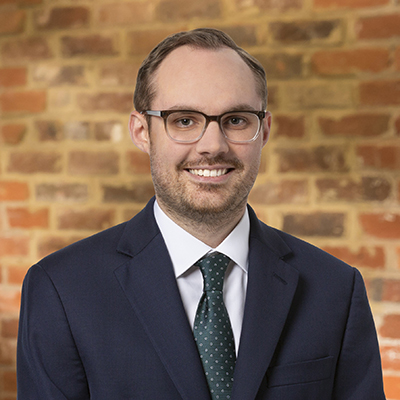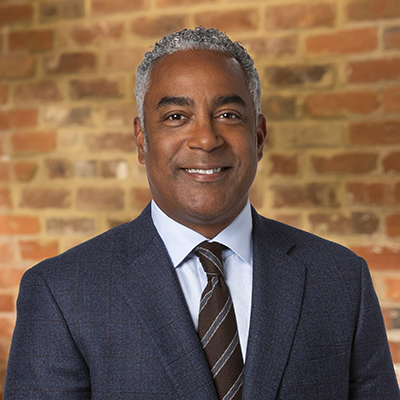Pedestrian safety is a major concern on Virginia’s roads. Hundreds of people suffer injuries every year in crashes involving vehicles and pedestrians. In many of these accidents, the pedestrian was not using a crosswalk. The situations raise the question: Do jaywalkers have the right of way? The answer isn’t always black and white.
Even when someone crosses outside a marked crosswalk or against a traffic signal, drivers still owe them a legal duty. Pedestrians aren’t stripped of all rights simply because they violated a traffic rule. Virginia law still protects them in many situations.
If you or someone you love was hit by a car while walking, and you’re unsure what to do next, a pedestrian accident attorney near you can offer guidance. A free consultation can help you understand whether you have a case and what steps to take next.
Programe una consulta gratuita
What is jaywalking under Virginia law?
Jaywalking might sound like a catch-all term, but Virginia law doesn’t actually use the word “jaywalking.” Instead, it spells out where pedestrians must cross streets. The law requires people to use marked crosswalks or cross at intersections when available. If there’s a traffic signal, pedestrians must obey it.
Crossing mid-block or outside an intersection where crosswalks exist may count as unlawful. That includes darting across highways or busy roads without signals or signs.
Common jaywalking scenarios
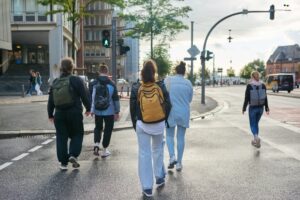 People jaywalk in many different situations. Here are a few examples:
People jaywalk in many different situations. Here are a few examples:
- Walking across the street between intersections
- Crossing during a “Don’t Walk” signal
- Running into traffic to catch a bus or taxi
- Walking in the road when a sidewalk is available
Even in these cases, Virginia doesn’t allow drivers to disregard people on foot.
Penalties for jaywalking
Jaywalking in Virginia is considered a traffic infraction. Law enforcement may issue a ticket with a small fine, typically less than $100. While not a criminal offense, it may still impact civil claims after a crash. However, a traffic violation by a pedestrian doesn’t excuse a driver’s carelessness or misconduct.
Do jaywalkers have legal rights when struck by vehicles?
Just because someone jaywalked doesn’t mean the driver gets a free pass. Drivers carry responsibilities that don’t disappear when pedestrians break minor rules.
Virginia’s duty of care for drivers
Every driver in Virginia must use care to avoid hitting others. That includes people crossing the street illegally. A driver who speeds, texts, drives drunk, or ignores the road may still bear fault if they hit someone on foot, even outside a crosswalk.
Pedestrian rights despite traffic violations
Jaywalkers don’t forfeit all legal protection. For example, if a driver had time to stop but didn’t, or if they were doing something reckless, a jaywalking pedestrian may still recover compensation.
Last clear chance doctrine in Virginia
Having any degree of fault for the pedestrian accident can adversely affect your ability to recover compensation in Virginia. However, courts also look at whether the driver had the “last clear chance” to avoid hitting the person.
- Did the driver see the pedestrian in time?
- Could they have stopped?
- Were they paying attention?
These questions matter more than whether the pedestrian used a crosswalk. The last clear chance doctrine can help injured pedestrians recover even when they made a mistake.
Driver responsibilities toward pedestrians
Drivers can’t assume that roads are only for cars. The law places several duties on motorists when it comes to people on foot.
Legal duty to exercise reasonable care
Drivers must drive safely and stay alert for pedestrians at all times. That means watching for people near curbs, at intersections, and even in places where pedestrians aren’t supposed to be.
Required actions when seeing pedestrians
When someone on foot steps into the street, drivers must slow down or stop to avoid hitting them. This rule applies whether the person is using a crosswalk or not. Drivers should never swerve around someone or try to rush past.
Failure to maintain proper lookout
One of the most common causes of pedestrian crashes is a driver failing to look out for others. A motorist who looks at their phone, adjusts the radio, or zones out at the wheel may miss someone crossing. Failing to notice a pedestrian is no excuse under the law.
When can jaywalkers recover damages after an accident?
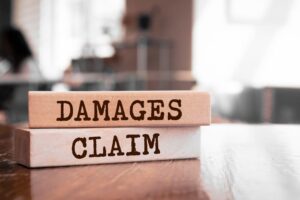 Even if someone violated a pedestrian law, that doesn’t always bar them from seeking money for their injuries. Virginia courts look at the whole picture.
Even if someone violated a pedestrian law, that doesn’t always bar them from seeking money for their injuries. Virginia courts look at the whole picture.
Circumstances where jaywalkers may have valid claims
A jaywalker might still have a valid injury claim if:
- The driver was speeding or distracted
- The pedestrian was visible and had already entered the roadway
- The driver had time to stop but didn’t
- The area was poorly lit or marked, and the driver made no effort to slow down
Driver negligence that overrides pedestrian violations
Drivers must do more than simply follow speed limits. They’re expected to slow down in areas with foot traffic, near schools, or during poor weather. If the driver ignored these responsibilities, their actions might outweigh the pedestrian’s mistake.
Evidence that supports pedestrian claims
Photos of the scene, witness statements, dashcam footage, and police reports can all show how the crash happened. Registros médicos also help demonstrate the injuries caused by the collision. When these pieces fit together, they may support the pedestrian’s claim even if jaywalking occurred.
What should you do if you’re hit while jaywalking?
If you’re physically able, certain steps at the scene can protect your health and support your claim. If you’re already recovering at home or in the hospital, there are still actions you can take to build your case and protect your rights.
Immediate steps after a pedestrian accident
If you’re still at the scene and able to move, take these steps:
- Ve a un lugar seguro: Move out of the road if you can do so safely. Avoid staying in traffic where you could be hurt further.
- Llama al 911: Ask someone to call emergency services, or do it yourself if you’re able. Report the crash and request medical help and police.
- Stay calm and alert: Don’t argue with the driver. Focus on staying aware of your surroundings and gathering key information.
- Intercambiar información: Get the driver’s name, license plate number, insurance info, and contact details. Write it down or take a photo.
- Talk to witnesses: If anyone saw the crash, ask for their contact information. Witnesses can play a big role in backing up your version of events.
- Tomar fotos: Use your phone to document the scene. Capture your injuries, the car, damage, traffic signs, street conditions, and anything else that helps show what happened.
- Avoid admitting fault: Don’t say anything like “I shouldn’t have crossed” or “I didn’t see the car.” These statements can be used against you later.
- Obtenga ayuda médica: Even if you feel fine, let paramedics check you out. Injuries sometimes take hours or days to show up.
If you’re already at home or in the hospital recovering
Even after you’ve left the scene, you can still take important steps to protect your health and legal options.
- Follow your doctor’s advice: Go to every follow-up appointment. Take medications as prescribed. If you’re told to avoid certain activities, stick to those instructions.
- Keep a journal: Write down how you’re feeling each day, where you hurt, what activities you can’t do, and how the injury has changed your daily life. This can help show the impact of the accident.
- Save all documents: Hold on to hospital records, doctor bills, medication receipts, and any written instructions you receive. These documents help show the cost and seriousness of your injuries.
- Gather contact info and evidence: If you didn’t get information at the scene, try to track it down now. Police reports, photos from the area, or security camera footage from nearby businesses may still be available.
- Don’t speak to the driver’s insurance company alone: They may call you asking for a statement. You don’t have to talk to them, and what you say can be used to limit or deny your claim. Let a lawyer handle those conversations.
- Consult a pedestrian accident attorney: A lawyer can review your situation and explain what options you have, especially in cases involving jaywalking. Virginia’s laws can make things difficult, but an attorney may be able to show the driver had the last clear chance to avoid the crash or was entirely at fault.
Even if you made a mistake when crossing the street, the driver’s actions matter too. Your ability to seek compensation often depends on what the driver did (or didn’t do) in the moments before the crash. Taking action now helps ensure you’re treated fairly and gives you a stronger position if you choose to pursue a legal claim.
How insurance companies handle jaywalking accident claims
Insurance companies look for ways to deny or limit payouts. That includes blaming the pedestrian whenever possible.
Common insurance company tactics
Adjusters may say the pedestrian caused the crash by jaywalking. They might also argue that the injuries aren’t serious or that something else caused them. Some will push you to settle quickly before you know the full impact of the injuries.
Why insurers may deny claims
If an insurance company believes you broke a law, they may try to reject your claim entirely. They rely heavily on Virginia’s contributory negligence rule to avoid paying.
Protecting your rights during insurance negotiations
Don’t give recorded statements without legal help. Don’t accept lowball offers. Let an attorney handle the back-and-forth. A lawyer can push back against unfair fault assignments and demand full compensation.
How a personal injury attorney can help jaywalking victims
Legal help makes a big difference in cases involving jaywalking. A abogado de lesiones personales knows how to shift focus from the pedestrian’s mistake to the driver’s fault.
Investigación y recolección de pruebas
An attorney can secure surveillance footage, hire accident reconstruction experts, and collect witness statements to show how the crash really happened.
Challenging fault determinations
If the driver or insurer blames the pedestrian, a lawyer can present facts showing the driver’s responsibility. That includes pointing out distractions, unsafe speeds, or lack of attention.
Negociar con compañías de seguros.
Attorneys know how to deal with insurers who try to dodge fair payouts. They’ll fight for a resolution that reflects the harm caused, not just what the company wants to pay.
Litigation when necessary
When the driver’s insurer refuses to take responsibility, the case may need to go to court. An attorney can present the case before a jury and hold the driver accountable.
Maximizing compensation for injuries
Legal counsel helps you seek everything you’re entitled to—from doctor bills to lost pay to how the injury changed your life.
Types of compensation available in pedestrian accident cases
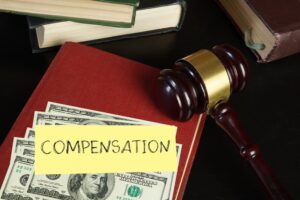 Pedestrian accident victims may qualify for different kinds of compensation based on how the crash affected them.
Pedestrian accident victims may qualify for different kinds of compensation based on how the crash affected them.
Medical expenses and future care costs
You may recover money for hospital visits, physical therapy, surgeries, and any long-term care needed after the crash.
Pérdida de salarios y disminución de la capacidad de ingresos
If the accident kept you from working, you may seek compensation for missed income. If your injury affects your ability to work going forward, that loss can also be included.
Pain and suffering damages
You may also recover for how the accident affected your daily life, relationships, and mental well-being. These damages help reflect what can’t be measured in receipts.
Property damage claims
If you were carrying a phone, laptop, or other items that got damaged in the crash, you may also claim those losses.
Virginia jaywalking FAQs
Can I sue if I was jaywalking and got hit by a car?
Yes, you may still have a valid claim depending on the circumstances and the driver’s actions.
Will my jaywalking automatically prevent me from recovering damages?
Not necessarily. Virginia law requires analysis of all parties’ actions and fault.
How long do I have to file a lawsuit after a pedestrian accident?
Estatuto de limitaciones de Virginia por reclamos por lesiones personales is generally two years.
What if the driver was speeding or distracted when they hit me?
Driver negligence can override pedestrian traffic violations in determining fault and liability.
Do I need a lawyer for a jaywalking accident case?
Given Virginia’s contributory negligence law, you must have strong legal representation to protect your rights.
Let our pedestrian accident attorneys in Virginia help
Pedestrians don’t lose their rights just because they crossed the street the wrong way. Drivers still carry a duty to avoid collisions. When someone on foot suffers harm, they deserve to hold the responsible party accountable. At Allen y Allen, our team helps victims stand up to insurance companies and demand what they’re owed.
We offer free consultations, and you don’t pay upfront. Our firm has helped many Virginians injured while walking recover the compensation they need to move forward. When you work with us, your fight becomes our fight. Contact us now and let’s talk about how we can help.



